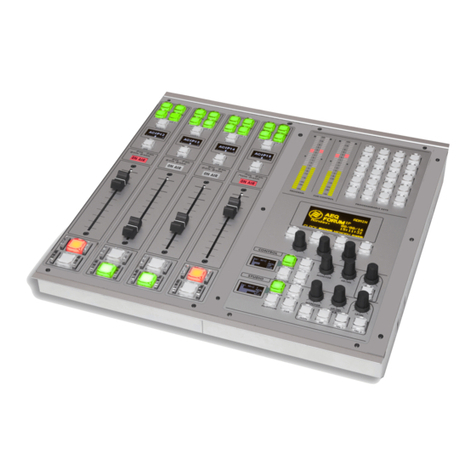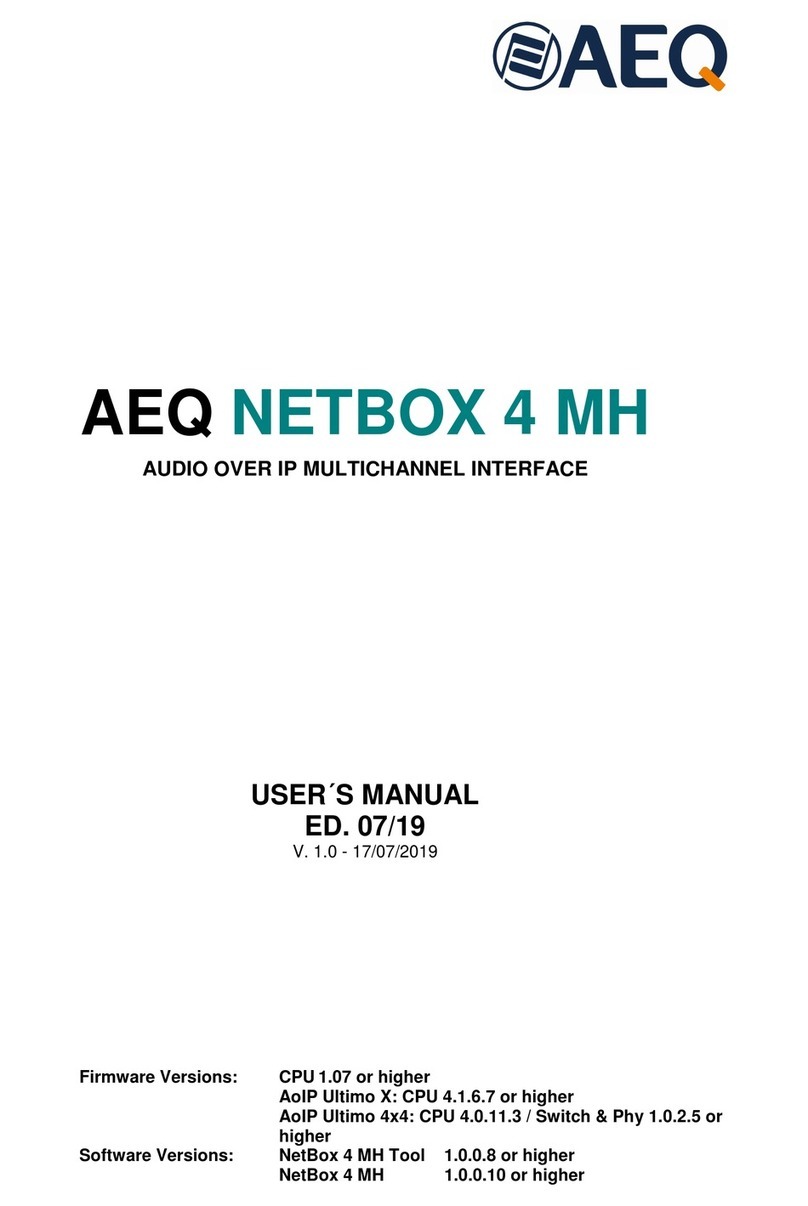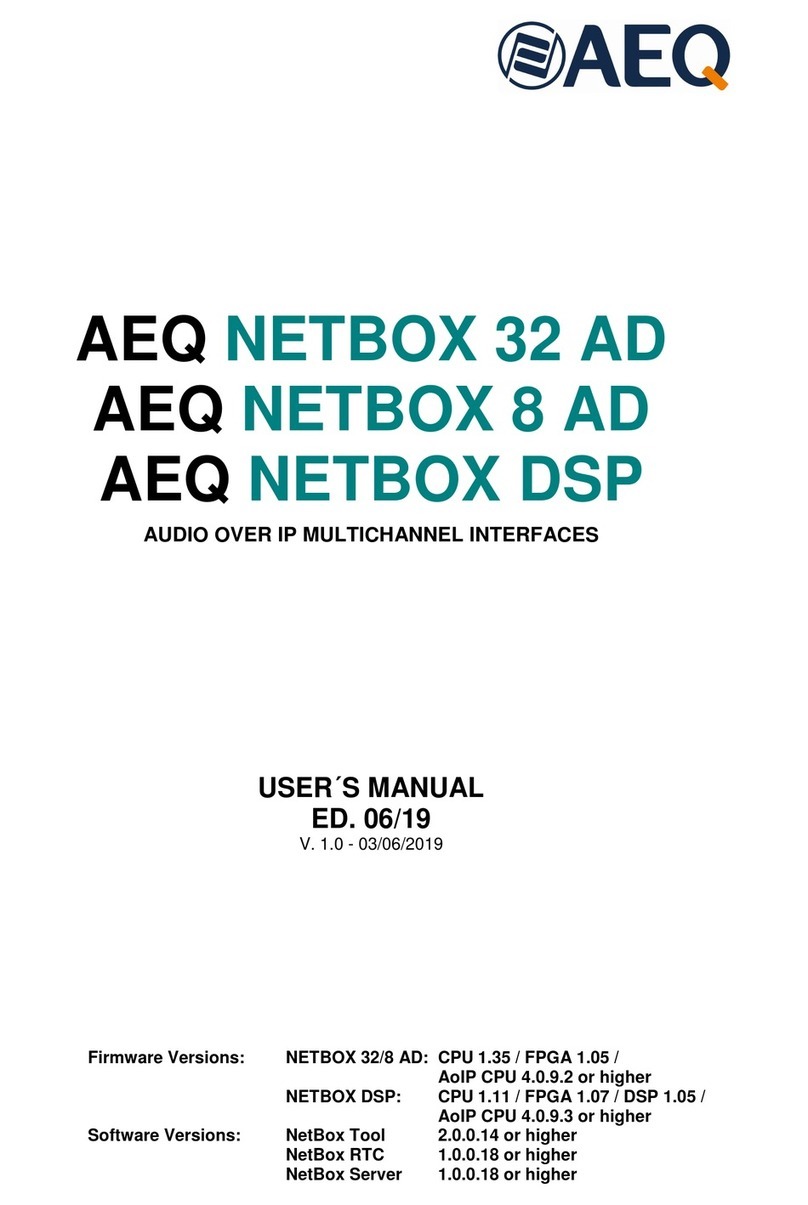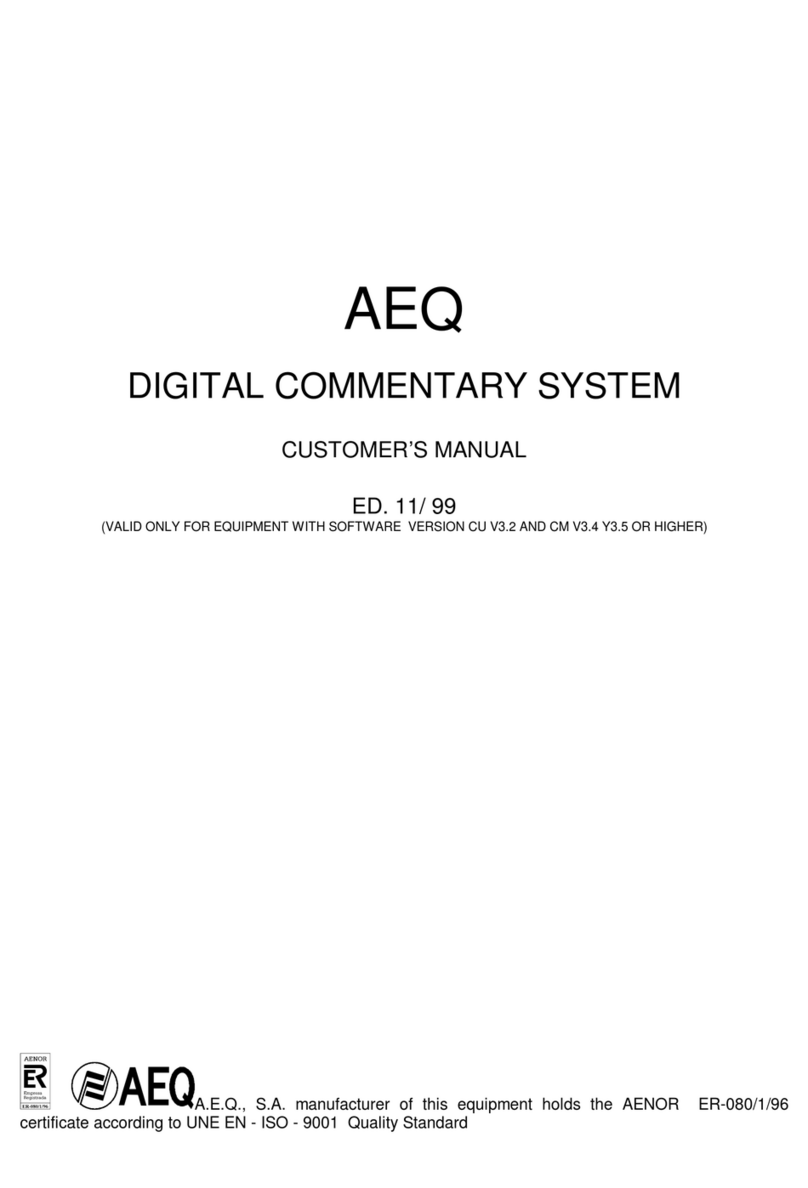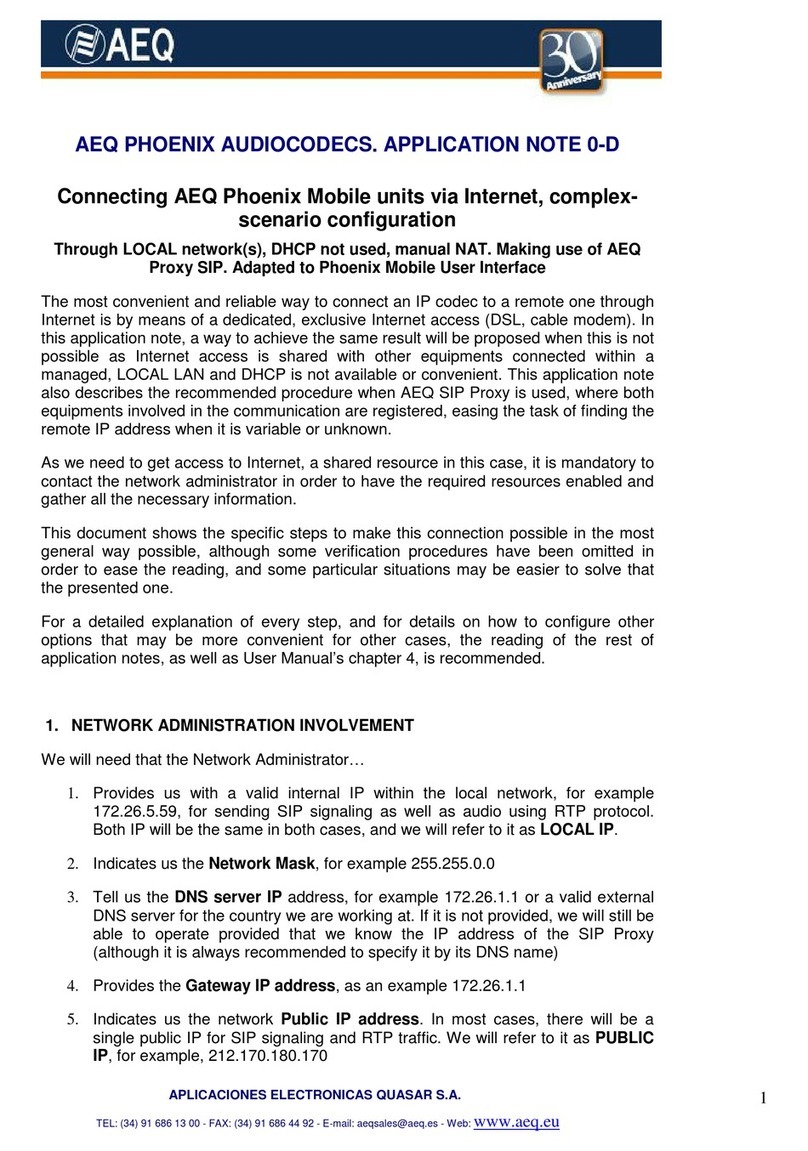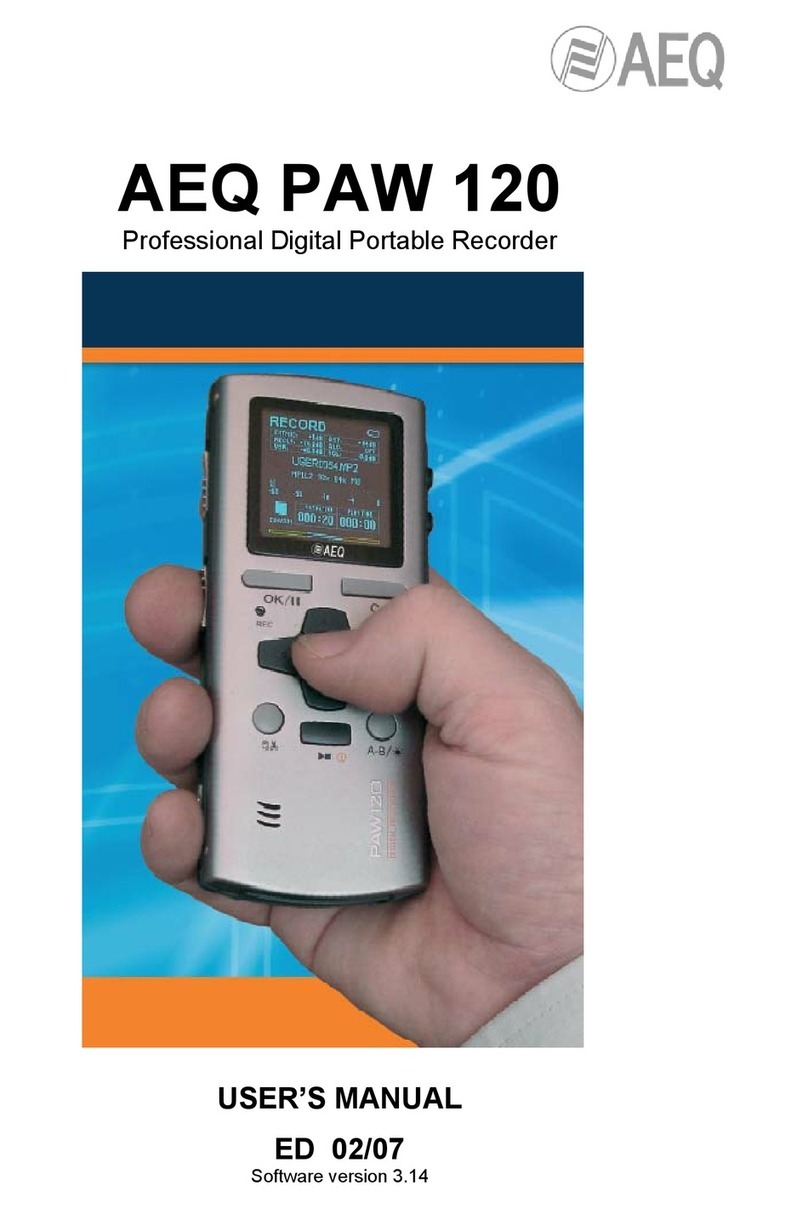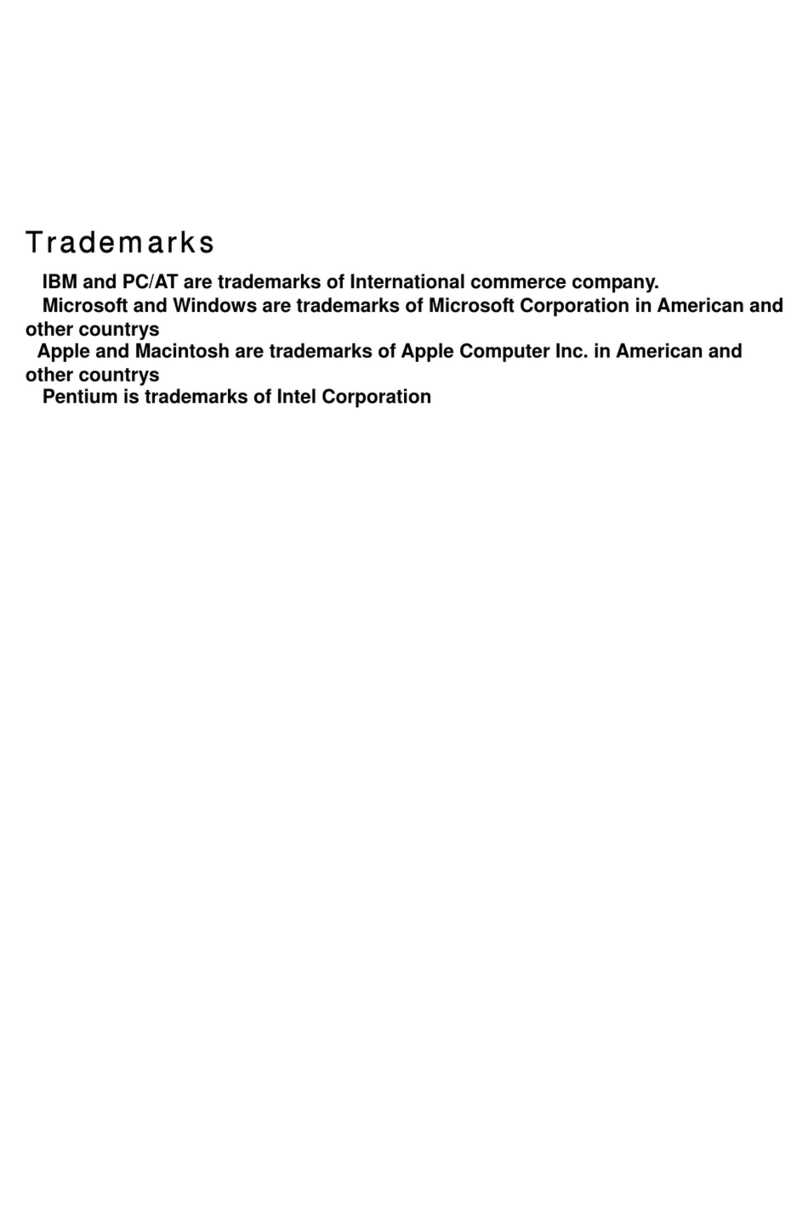The AEQ FORUM digital mixer includes memory banks that store the settings for each signal:
control surface signal distribution, routing to the output buses, management of parameters and
activation of the different available audio processes. This allows the console to adapt easily to
different programs with different technical requirements.
Its two Ethernet ports enable the local or remote interconnectivity, facilitating set-up and
maintenance, monitoring and control.
Forum has also been designed to ensure interoperability with communications equipment and
future developments by AEQ or other manufacturers.
1.2. Functional specifications
•AEQ FORUM is a digital compact audio console fully DSP based.
•Self-contained Design over anodized metal.
•Configurable sizes 12, 8 and 4 faders. Conductive plastic faders 100mm.
•Internal sampling rate 48 kHz to 24 bits like internal reference signal (SRC available
for other word-length according FW version). Digital I/O reference variable through
external clock reference like for example 44.1KHz, 48KHz or 96KHz.
•Modular design allows adjust the number of inputs and outputs of the equipment to
the requirements of each facility. Front removable modules for easy maintenance.
•Up to 14 modules or multiple inputs and outputs, out of which 4 can be
micro-double line and 2 digital hybrid.
•Electronically balanced microphone inputs with phantom power.
•Electronically balanced line Inputs and outputs. Adjustable gain ± 12dB.
Balance and panoramic control selectable for all channels. Selective phase
inversion. Adjustable gain for up to 128 signals, including hidden signals.
•Transformer balanced Digital inputs and outputs with adjustable gain ± 12
dB. Balance and panoramic control selectable for all channels. Selective
phase inversion. Adjustable gain for up to 128 signals, including hidden
signals.
•Sample rate converter (SRC) for all digital inputs. Supports digital signal
formats, AES / EBU (ref AEE3-1992) and S-PDIF.
•Additional input, integrated talk-back and auto-control micro-line.
•Integrated monitor and headphone outputs for control and studio. Cough
mute, ON-AIR signalling for studio and control, Fader-start, remote PFL,
talk-back, automatic monitors muting. Monitoring can be configured for any
of the system signals.
•CUE output and integrated CUE speaker.
•Headphone outputs integrated into the chassis.
•PFL Monitor integrated in chassis.
•Optional 64 channels digital MADI optical fiber connection.
•Test tone generator.
•8 Opto-coupled GPI´s and GPO´s and 4 relay contact GPO´s.
•4 direct routing buttons on each channel.
•Entire switching is over solid-state digital switches.
•Internal Routing 64x64 mono, with additional capability for routing signals from the
optional MADI interface. Optional independent pre-fader / post-fader for all routings.
•Complete digital control circuits.
•All signals assignable to any control channel.
•Configuration of up to 8 auxiliary outputs N-1.
•2 precision stereo VU meters.
•Externally synchronized clock, timer and stopwatch.
•Control of external equipment (AEQ hybrids and audio codecs) integrated in the
programmable key section.
